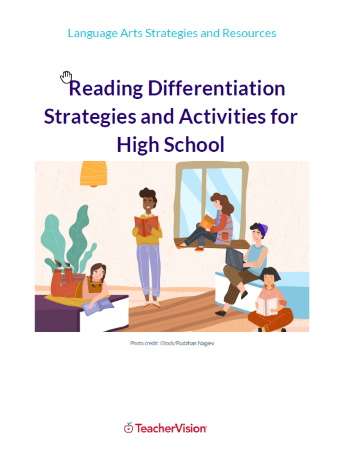Catch Them Being Good
A Technique for Handling Disruptive Behavior"Johnny loves negative attention. I know he does those things to get me upset and make the class laugh. His classmates think he's cute when he does something to distract me from the lesson and I have to call him on it."
Sound familiar? Some children are disruptive because of the attention their disruption receives, whether the attention is from you or from other classmates. Attention can often be in the form of reminders (e.g., "Please stay in your seat and be quiet while I am reading with the Batman reading group"). It can also be in the form of more negative comments (e.g., "Johnny, how many times have I told you not to throw your pencil at Bryan").
In some cases, teachers may make comments to students that are demeaning and draw attention to those students from their classmates. For example, "Barbara, that was the dumbest thing I've ever seen," is certainly demeaning, but it may draw the attention of the rest of the class to Barbara's behavior. Such attention may be appealing to Barbara. She may then see it as a way to get her classmates' attention.
The scenario that follows describes the case of a hypothetical child who is disruptive because his disruptive behavior results in unusual comments from the teacher.
During seat-work assignments, William seems to be constantly involved in some kind of inappropriate and disruptive classroom behavior. Mrs. Rutherford has to constantly remind him to stop disrupting the class and return to his seat. When he is in his seat, William often turns around and teases the student behind him, or he taps the person in front of him and begins talking loudly. When Mrs. Rutherford sees that, she often redirects him back to work with some kind of comment such as, "William, once again you win the motor mouth contest for the day! Stand up and take a bow. Now that you have received your just recognition, please return to work!" Of course William and his friends break up in laughter, which then gets Mrs. Rutherford's "goat."Sometimes Mrs. Rutherford sends William out into the hall when he is disruptive, and sometimes she sends him to the school principal. Mrs. Rutherford complains to the school student success team that she cannot control William's frequent disruptive classroom behavior. She wants him assessed for possible attention deficit hyperactivity disorder.
Note that in the above scenario the teacher's attention often follows the disruptive behavior. In particular, making a comment about William's disruptive behavior only seems to reinforce such behavior. William and his friends think it is funny to win the "motor mouth" contest of the day. Mrs. Rutherford may be inadvertently encouraging a contest that others may wish to enter as well.








